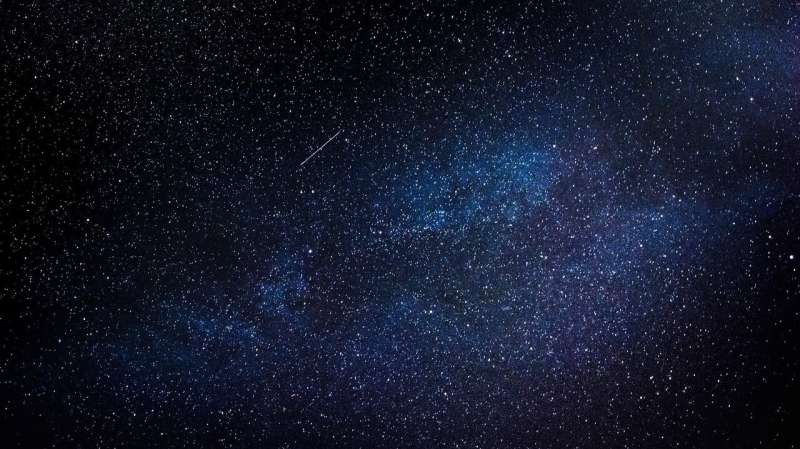Russia postpones lunar mission over 'problems during testing'
Tuesday, 24 August 2021 15:43
Russia revealed Tuesday it postponed its first mission to the moon's surface in decades as a result of "problems" encountered during tests of the Luna-25 spacecraft.
The country's space agency Roscosmos announced last week that the mission—originally scheduled for October 1—from the Vostochny Cosmodrome in the Far East had been moved to May 2022.
The Luna-25 mission to the Moon's south pole aims to probe ice deposits there. It is set to be Russia's first mission to the moon's surface in 45 years and the first in its post-Soviet history.
The chief engineer of Russia's state NPO Lavochkin design bureau explained the delay Tuesday saying that "more time" was needed to complete successful trials.
"We have encountered certain problems during testing," Alexander Shirshakov told the Interfax news agency.
"A safe landing system is of crucial importance and we are working on Luna-25's soft landing system," Shirshakov said.
The race back to the moon is in full swing after China in December 2020 became the first country to return samples from the moon since the Soviet Luna-24 mission in 1976.
NorthStar SSA and Earth intelligence constellation gets key government approval
Tuesday, 24 August 2021 15:21
Canada’s government has conditionally approved startup NorthStar Earth & Space’s plan to deploy 52 commercial imaging satellites to keep tabs on what’s happening in orbit and down below.
Op-ed | Can Frank Kendall help the Space Force win the space race against China?
Tuesday, 24 August 2021 13:00
Kendall’s perception of what was needed for success in DoD procurement has largely tracked with what venture and private equity investors have pursued.
Numerica upgrades telescope network to track objects in LEO
Tuesday, 24 August 2021 12:00
Space data provider Numerica is upgrading its network of ground-based telescopes so they can track objects both in low Earth orbit and beyond.
Virgin Orbit to expand launch business, move into satellite services
Tuesday, 24 August 2021 10:37
Virgin Orbit will use the proceeds of a merger with a special-purpose acquisition company to expand its launch business and develop a satellite constellation for internet-of-things and Earth observation services.
Op-ed | Pentagon finally embracing the idea of buying ‘good enough’ space solutions
Tuesday, 24 August 2021 10:00
Private sector advances put the Space Development Agency in a position of strength due to its vision of acquiring capabilities quickly
Raymond’s progress report on Space Force: ‘All the pieces are coming together’
Tuesday, 24 August 2021 09:30
The military bureaucracy is not known for speed, but moving fast is critical in today’s environment, said the chief of space operations of the U.S. Space Force Gen. John “Jay” Raymond.
NASA faces new criticism, possible congressional hearing over spacesuit delays
Tuesday, 24 August 2021 08:26 NASA is facing new criticism over a recent agency watchdog report that disclosed spacesuit development is so far behind schedule that a return to the moon would be delayed beyond a 2024 target.
Coupled with the high cost, estimated to hit $1 billion eventually, the development issues are serious enough to prompt a congressional hearing, U.S. Rep. Don Beyer, D-Va., told UPI.
"I almost
NASA is facing new criticism over a recent agency watchdog report that disclosed spacesuit development is so far behind schedule that a return to the moon would be delayed beyond a 2024 target.
Coupled with the high cost, estimated to hit $1 billion eventually, the development issues are serious enough to prompt a congressional hearing, U.S. Rep. Don Beyer, D-Va., told UPI.
"I almost UCF experimental space dirt used by NASA, private companies to advance space exploration
Tuesday, 24 August 2021 08:26 An ingenious idea born out of a research lab at the University of Central Florida has led to a growing operation that is having a direct impact on space exploration.
Chances are that some of the equipment landing on the moon and the methods that will be used to grow food or build shelter, will have been tested first on experimental soil developed right at UCF.
UCF's Exolith Lab has p
An ingenious idea born out of a research lab at the University of Central Florida has led to a growing operation that is having a direct impact on space exploration.
Chances are that some of the equipment landing on the moon and the methods that will be used to grow food or build shelter, will have been tested first on experimental soil developed right at UCF.
UCF's Exolith Lab has p Interstellar comets like Borisov may not be all that rare
Tuesday, 24 August 2021 08:26 In 2019, astronomers spotted something incredible in our backyard: a rogue comet from another star system. Named Borisov, the icy snowball traveled 110,000 miles per hour and marked the first and only interstellar comet ever detected by humans.
But what if these interstellar visitors-comets, meteors, asteroids and other debris from beyond our solar system-are more common than we think?
In 2019, astronomers spotted something incredible in our backyard: a rogue comet from another star system. Named Borisov, the icy snowball traveled 110,000 miles per hour and marked the first and only interstellar comet ever detected by humans.
But what if these interstellar visitors-comets, meteors, asteroids and other debris from beyond our solar system-are more common than we think? Gilmour Space signs first European partnership agreement with Exolaunch
Tuesday, 24 August 2021 08:26 Gilmour Space Technologies, a premier Australian rocket company pioneering new and innovative hybrid propulsion technologies for launching small satellites, and Exolaunch, a Berlin-based leader in rideshare launch and deployment services for small satellites, has announced a series of agreements for small satellite launch, deployment and in-space transportation services.
Under the agreemen
Gilmour Space Technologies, a premier Australian rocket company pioneering new and innovative hybrid propulsion technologies for launching small satellites, and Exolaunch, a Berlin-based leader in rideshare launch and deployment services for small satellites, has announced a series of agreements for small satellite launch, deployment and in-space transportation services.
Under the agreemen Martian snow is dusty, could potentially melt, new study shows
Tuesday, 24 August 2021 08:26 Over the last two decades, scientists have found ice in many locations on Mars. Most Martian ice has been observed from orbital satellites like NASA's Mars Reconnaissance Orbiter. But determining the grain size and dust content of the ice from that far above the surface is challenging. And those aspects of the ice are crucial in helping scientists determine how old the ice is and how it was depo
Over the last two decades, scientists have found ice in many locations on Mars. Most Martian ice has been observed from orbital satellites like NASA's Mars Reconnaissance Orbiter. But determining the grain size and dust content of the ice from that far above the surface is challenging. And those aspects of the ice are crucial in helping scientists determine how old the ice is and how it was depo Solar System's fastest-orbiting asteroid discovered
Tuesday, 24 August 2021 08:26 The Sun has a new neighbor that was hiding in plain twilight. An asteroid that orbits the Sun in just 113 days-the shortest known orbital period for an asteroid and second shortest for any object in our Solar System after Mercury-was discovered by Carnegie's Scott S. Sheppard in evening twilight images taken by Brown University's Ian Dell'Antonio and Shenming Fu.
The newfound asteroid, cal
The Sun has a new neighbor that was hiding in plain twilight. An asteroid that orbits the Sun in just 113 days-the shortest known orbital period for an asteroid and second shortest for any object in our Solar System after Mercury-was discovered by Carnegie's Scott S. Sheppard in evening twilight images taken by Brown University's Ian Dell'Antonio and Shenming Fu.
The newfound asteroid, cal US still interested in possibility of having astronauts fly on board Soyuz: Roscosmos
Tuesday, 24 August 2021 08:26 The United States may purchase a seat on the Russian Soyuz in the spring of next year, as a precaution, in case of any issues with commercial US spacecraft, Roscosmos Deputy Director General for International Cooperation Sergey Saveliev told Sputnik.
"The Americans are leaving this opportunity [acquiring a Soyuz seat in the spring of 2022] as an option, counting on help and assistance from
The United States may purchase a seat on the Russian Soyuz in the spring of next year, as a precaution, in case of any issues with commercial US spacecraft, Roscosmos Deputy Director General for International Cooperation Sergey Saveliev told Sputnik.
"The Americans are leaving this opportunity [acquiring a Soyuz seat in the spring of 2022] as an option, counting on help and assistance from Blue and Gold satellites headed to Mars in 2024
Tuesday, 24 August 2021 08:26 An interplanetary mission led by the University of California, Berkeley, to put two satellites - dubbed "Blue" and "Gold" - into orbit around Mars has been officially authorized to prepare for launch in October 2024.
The announcement last week by NASA means that by 2026 the spacecraft will likely be exploring the red planet's atmosphere and its interaction with the solar wind.
Called
An interplanetary mission led by the University of California, Berkeley, to put two satellites - dubbed "Blue" and "Gold" - into orbit around Mars has been officially authorized to prepare for launch in October 2024.
The announcement last week by NASA means that by 2026 the spacecraft will likely be exploring the red planet's atmosphere and its interaction with the solar wind.
Called 
